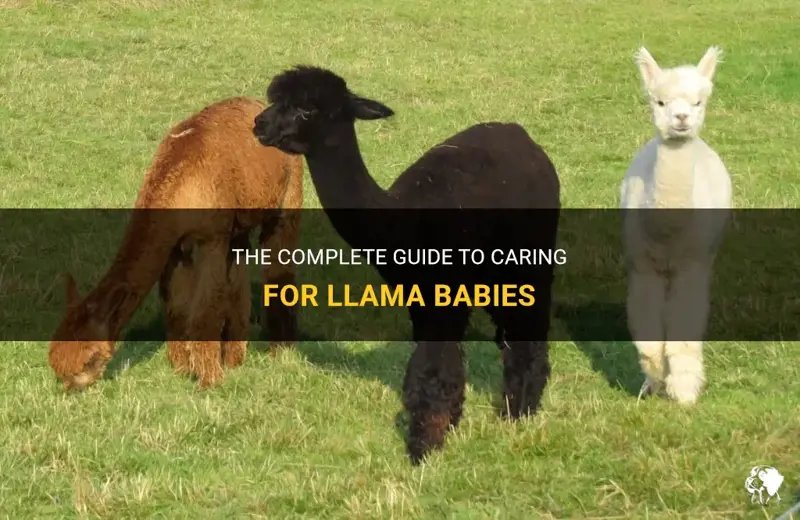
Llamas are not just adorable; they also have specific needs that are crucial to their well-being. From their diet and social behavior to grooming and health check-ups, getting the basics right can make a world of difference. Honestly, keeping a llama can be an incredibly rewarding experience, but it’s important to understand their needs to build a lasting friendship. Let’s break down how to care for a llama in a way that’s easy to understand.
Understanding Llamas: Their Behavior and Temperament
Before diving into the nitty-gritty of care, it’s essential to understand what makes llamas tick. Llamas are naturally social animals. They thrive in herds, which means having at least two llamas is highly recommended. Imagine living in an apartment with no neighbors—pretty lonely, right? Llamas feel the same way. They communicate through a series of vocalizations, including humming and clicking sounds.
Llamas are often described as curious and intelligent. They can form strong bonds with humans and other llamas. Keeping their environment enriched with toys or obstacles can stimulate their minds and keep them happy. You might find them playfully chasing each other or investigating new things in their surroundings. This playful curiosity is a hallmark of llama nature, and it’s part of what makes them so charming.
It’s also important to note that llamas can display protective behavior, especially towards their herd. If they feel threatened, they might spit or kick, so it’s vital to approach them gently and respectfully. Understanding their social structure and behavior will help you create a harmonious living situation.
Feeding Your Llama: What They Eat
Now, let’s talk about food. Llamas are herbivores, which means they primarily eat plants. Their diet mainly consists of hay, grass, and specially formulated llama pellets. You might be wondering how much to feed them. Generally, an adult llama requires around 1.5% to 2% of its body weight in dry feed each day.
When feeding your llama, focus on high-quality hay. Good options include timothy or alfalfa hay, but steer clear of moldy or dusty hay, as this can harm your llama’s respiratory health. You can also offer fresh grass, but be cautious about overgrazing; it’s better to provide a balanced mix in their diet.
Additionally, llamas need fresh, clean water daily. Make sure their water supply is free of debris and contaminants. Here’s a quick list of food options for your llama:
- Hay (timothy or alfalfa)
- Llama pellets
- Fresh grass (in moderation)
- Occasional treats like carrots or apples
Feeding time can be a bonding experience, so take some time to sit with your llama while they enjoy their meal. You’ll find that sharing moments like this can strengthen your connection.
Grooming and Maintenance: Keeping Them Clean
Grooming your llama is not just about keeping them looking good; it’s also crucial for their health. Llamas have wool that needs regular maintenance, especially if they live in a warmer climate. Think of them like a fluffy sweater that needs some regular care to stay comfy. Regular brushing helps remove dirt, debris, and loose wool, keeping their coat healthy and shiny.
Aim to brush your llama at least once a week using a metal curry comb, which works wonders in removing undercoat and dirt. Pay special attention to the areas around their legs and neck, as these spots can harbor dirt easily. Additionally, check their toenails every couple of months. Overgrown toenails can lead to pain or mobility issues, so trimming is essential.
During warmer months, you can also give them a good bath. Just make sure to use a gentle, llama-friendly shampoo. It’s best to bathe them outside during warm days to avoid chilling them. After the bath, give them some time to dry off in a sunlit area and enjoy some grooming afterward.
Health Care: Keeping Your Llama Happy and Healthy
Health care is a top priority when it comes to llama ownership. Regular veterinary check-ups are essential for monitoring their overall health. This includes vaccinations, dental care, and parasite control. Establish a relationship with a vet who specializes in llamas for the best care possible.
Keep an eye on your llama’s behavior. Are they eating and drinking normally? Are they active? Subtle changes in their routine can indicate health issues, so being observant is key. If you notice signs like lethargy, changes in appetite, or unusual vocalizations, don’t hesitate to contact your veterinarian.
Furthermore, make sure your llama has a safe and clean living environment. This means providing shelter from extreme weather conditions, whether it’s too hot or too cold. They need space to roam and graze but also a comfortable area to rest. A spacious, secure pen is ideal.
Social Interaction: The Importance of Companionship
As mentioned earlier, llamas are social creatures. They thrive in the company of other llamas, so if you only have one, consider getting a companion. Not only do they enjoy each other’s company, but they also engage in natural behaviors that keep them mentally stimulated.
If you’re introducing a new llama to your existing one, do so gradually. Let them get used to each other from a distance before letting them share the same space. This helps reduce stress and potential conflicts. You might even find them grooming or playing together once they become friends!
You can also engage them with interactive toys or obstacles in their living area. Items like balls or even simple cardboard boxes can spark their curiosity and encourage play. Just be sure these items are safe and won’t pose any choking hazards.
Building Trust: How to Bond with Your Llama
Building a trusting relationship with your llama takes time, but it’s incredibly rewarding. Start by spending quiet time with them—don’t rush the bonding process. Offer treats and gentle petting, and talk to them softly. You might be surprised by how quickly they warm up to you.
Consistency is also essential. Feeding them at the same time every day helps establish a routine they can rely on. Try to be their main caregiver so they associate you with their daily care. Over time, they’ll learn to trust you, and you’ll be able to guide them more easily during grooming or vet visits.
Don’t forget to observe their body language. A relaxed llama might have ears pointed forward, a calm tail, and a soft expression. Understanding their signals will help you communicate better, and it’ll make interacting with them much more enjoyable.
Caring for a llama can be an incredible journey filled with joy, laughter, and a little bit of learning along the way. From understanding their behavior and diet to grooming and health care, each aspect of llama care is an opportunity to bond with your unique friend. Just remember, llamas are social animals that thrive on companionship and care.
If you approach llama care with patience and love, you’ll find that having them in your life is as rewarding as it is fun. Embrace the quirks, enjoy the cuddly moments, and cherish the special bond you create. After all, your llama is more than just a pet—they’re a companion who’ll fill your days with smiles.

